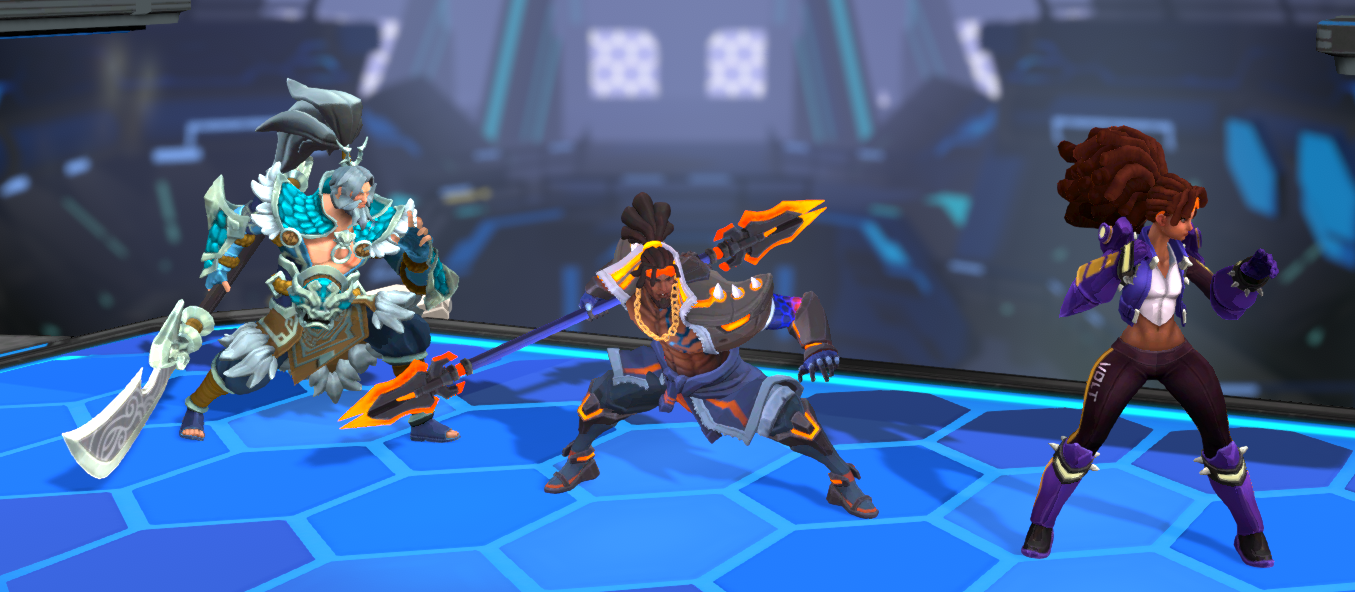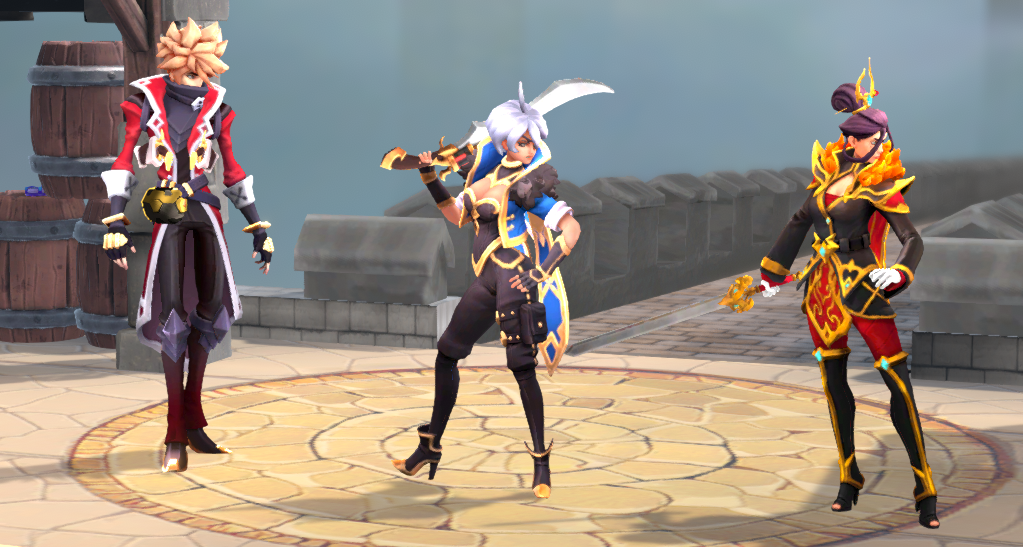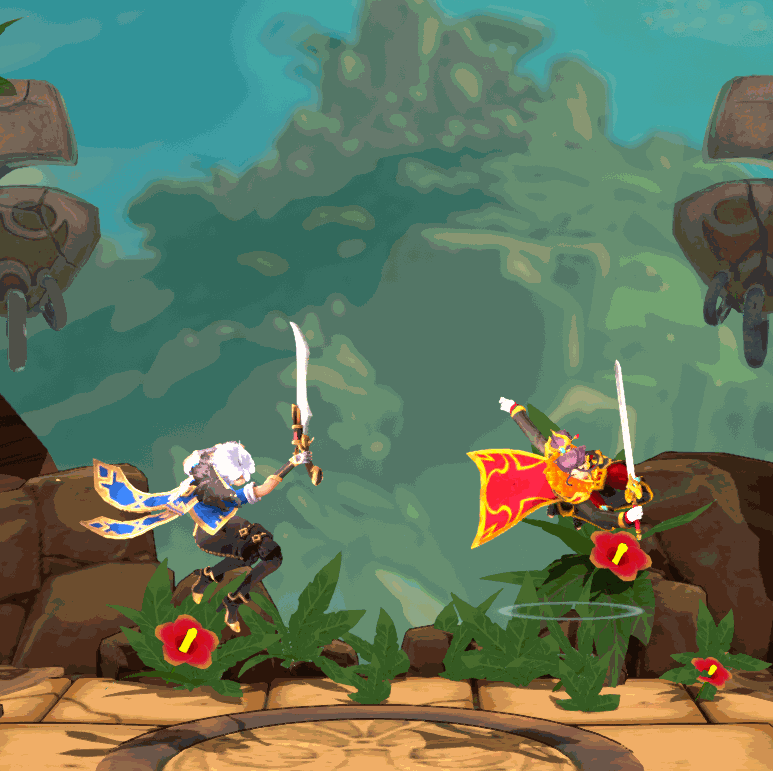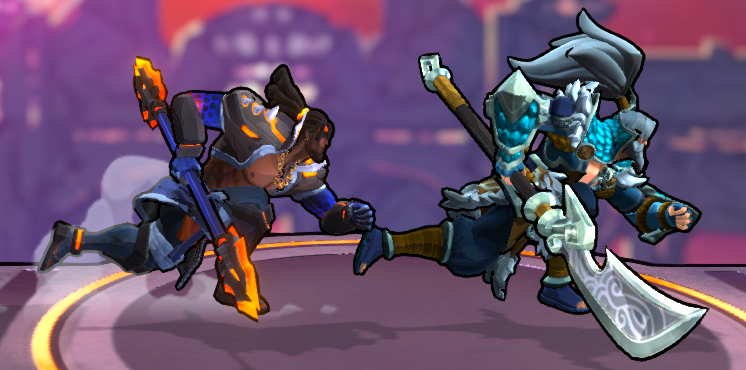Fusion Characters
An experiemnt in rapid content production
2021
Content Development
Design, Implementation & Management
The lifeblood of any fighting game is its cast of characters, and in early 2021, Rushdown's roster was relatively narrow, with only 8 characters across the entire cast.
To tackle this problem, I oversaw execution of an experimental project that would allow us to rapidly expand the roster with minimal production costs. The basic premise involved produceing new character from as many reused assets as possible. These characters were billed as “Fusions”, framing the design as an intentional combination of characters to justify the reused rig and animations.
Unlike a typical character reskin, we wanted these characters to be unique and original in terms of their gameplay. In a genre where gameplay is so dependent on animations, it took some creativity and exploration to figure out how to best capitalize on existing assets to produce unique moves and fresh gameplay patterns.
Fusion characters would be built out of the following components:
Ultimately we built two of these fusion characters before securing sufficient funding to shift the pipeline over to fully original characters. Both characters are widely well-liked, and their abilities and playstyles are so meaningfully distinct that comparisons to the base character are essentially nonexistent in player feedback channels. Newer players often fail to recognize any overlap at all unless it’s explicitly pointed out to them.
- An existing character’s rig and animations would be used for the bulk of the character.
- The art team would provide concept art, as well as a new 3D model hooked up to the old character’s rig.
- If necessary, we could create a handful of new animations to fill especially difficult gaps in the new character's moveset, but the main directive was to produce a character with as few original assets as possible.
- Beyond this, almost the entirety of the character’s development was left up to a design team, which consisted mainly of myself and one co-designer.
Ultimately we built two of these fusion characters before securing sufficient funding to shift the pipeline over to fully original characters. Both characters are widely well-liked, and their abilities and playstyles are so meaningfully distinct that comparisons to the base character are essentially nonexistent in player feedback channels. Newer players often fail to recognize any overlap at all unless it’s explicitly pointed out to them.
 Seth was our first fusion character, and we leaned heavily into the fusion theme this time around -- something we would discover was not the best idea. Only two of Seth's abilities across his entire moveset recieved any new animation work, and he was actively marketed as a fusion of existing characters.
Seth was our first fusion character, and we leaned heavily into the fusion theme this time around -- something we would discover was not the best idea. Only two of Seth's abilities across his entire moveset recieved any new animation work, and he was actively marketed as a fusion of existing characters.
Seth's design also made a very direct attempt at incorporating gameplay features and properties from both of the constitutent characters. While this didn't prevent us from creating a satisfying character or engaging gameplay loops, it did condition player perception of the character on release in ways we didn't like. Additionally, the combination of this design constraint along with the necessity of reusing animations felt excessively limiting in terms of the design space it allowed us to explore with these new characters.
 Having learned from our experiences the first time around, our second fusion character, Velora, was much more free-form in her design. Although we were necessarily limited by the shared rig, we made much less explicit effort to incorporate design and playstyle elements from her constitutent characters. On top of that, we put a bit more budget into new animations for situations where it proved particularly difficult to kitbash the old animations into something meaningfully distinct.
Having learned from our experiences the first time around, our second fusion character, Velora, was much more free-form in her design. Although we were necessarily limited by the shared rig, we made much less explicit effort to incorporate design and playstyle elements from her constitutent characters. On top of that, we put a bit more budget into new animations for situations where it proved particularly difficult to kitbash the old animations into something meaningfully distinct.
As a result, Velora ended up feeling markedly more like a new character than a kitbash of old assets. On top of that, we shifted our marketing angle away from any mentions of the fusion or reuse elements, directing perception away from that fact and towards the excitement of what was effectively an entirely new character.
 Velora's Up-Special reuses an animation from Zhurong's Down-Aerial, spliced with several other animations (fall and double jump) to create an entirely new move.
Velora's Up-Special reuses an animation from Zhurong's Down-Aerial, spliced with several other animations (fall and double jump) to create an entirely new move.
Prior to building out these fusions, any changes in a character's rotation had to be baked into the animation. Because of the high impact that dynamic rotations and angle adjustments can make when reusing animations, I set some time aside to build out a system that allowed us to do just that.
These tools provided us considerably more freedom to build out mechanically distinct movesets for both characters with little-to-no new animation work in the pipeline.
 Seth and Weishan's shared animation suite becomes apparent during their run, which proved infeasible to kitbash into something meaningfully distinct.
Seth and Weishan's shared animation suite becomes apparent during their run, which proved infeasible to kitbash into something meaningfully distinct.